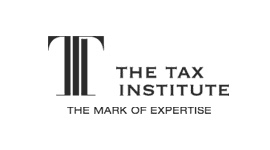There are some changes coming for those of you who have employees.
Starting from July 1st, a number of government requirements that will impact how you manage payroll (including superannuation) for employees. So, what do you need to know to ensure compliance? Let’s take a closer look.
What are the changes?

Our team at Profacc will be able to talk you through the changes in more detail, and help you navigate what it means for you. But here is a summary:
- The $450 superannuation contributions cap is being removed
Currently, you don’t have to pay superannuation for most employees who make less than $450 per month. But now this cap is being removed so you will need to pay super for all employees over the age of 18, no matter how much they worked in a month.
It’s important to note too that from 1 July 2022, super will be payable to employees under 18 if they work more than 30 hours per week regardless of how much they earn.
- Superannuation increased to 10.5% - and more
Currently you must pay 10% of an employee’s earnings, but from July 1 this will slide up to 10.5%.
Then the Superannuation Guarantee is legislated to increase by 0.5% each year until it reaches 12% in 2025.
- Update to the indexation of Study or Training Loan Supports (STSL)
Each year, the indexation rate applied to these loans changes based on the consumer price index (CPI). Indexation maintains the real value of the loan by adjusting it in line with shifts in the cost of living and affects the part of an accumulated study and training loan that has remained unpaid for more than 11 months.
This year’s indexation is set at 3.9%.
- Lowering tax instalments for small business – PAYG
Normally, GST and PAYG instalment amounts are adjusted using a GDP adjustment or uplift. For the 2022-23 income year, the Government has set this uplift factor at 2% instead of the 10% that would have applied. The 2% uplift rate will apply to small to medium enterprises eligible to use the relevant instalment methods for instalments for the 2022-23 income year:
The effect of the change is that small businesses using this PAYG instalment method will have more cash during the year to utilise. However, the actual amount of tax owing on the tax return will not change, just the amount you need to contribute during the year.
How to prepare for EOFY
There are often regulatory changes for business owners to manage or implement, and this year is no different. For more information on closing out payroll at year end, our team at Profacc can help you.
There is also a great checklist from Xero: Your checklist to end-of-year payroll

Profacc Accountants can help you manage your business accounts as well as your personal wealth. Contact us today.






